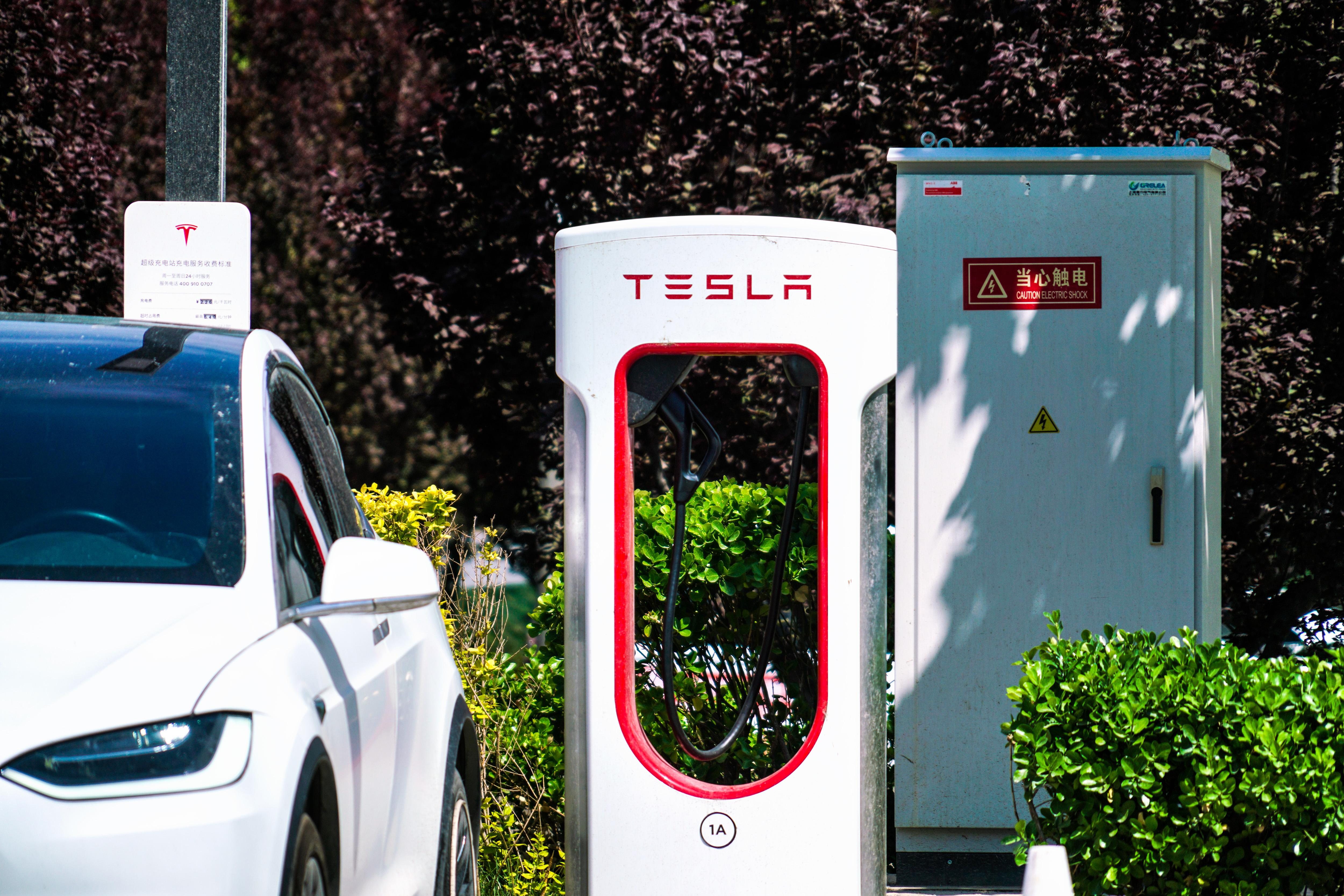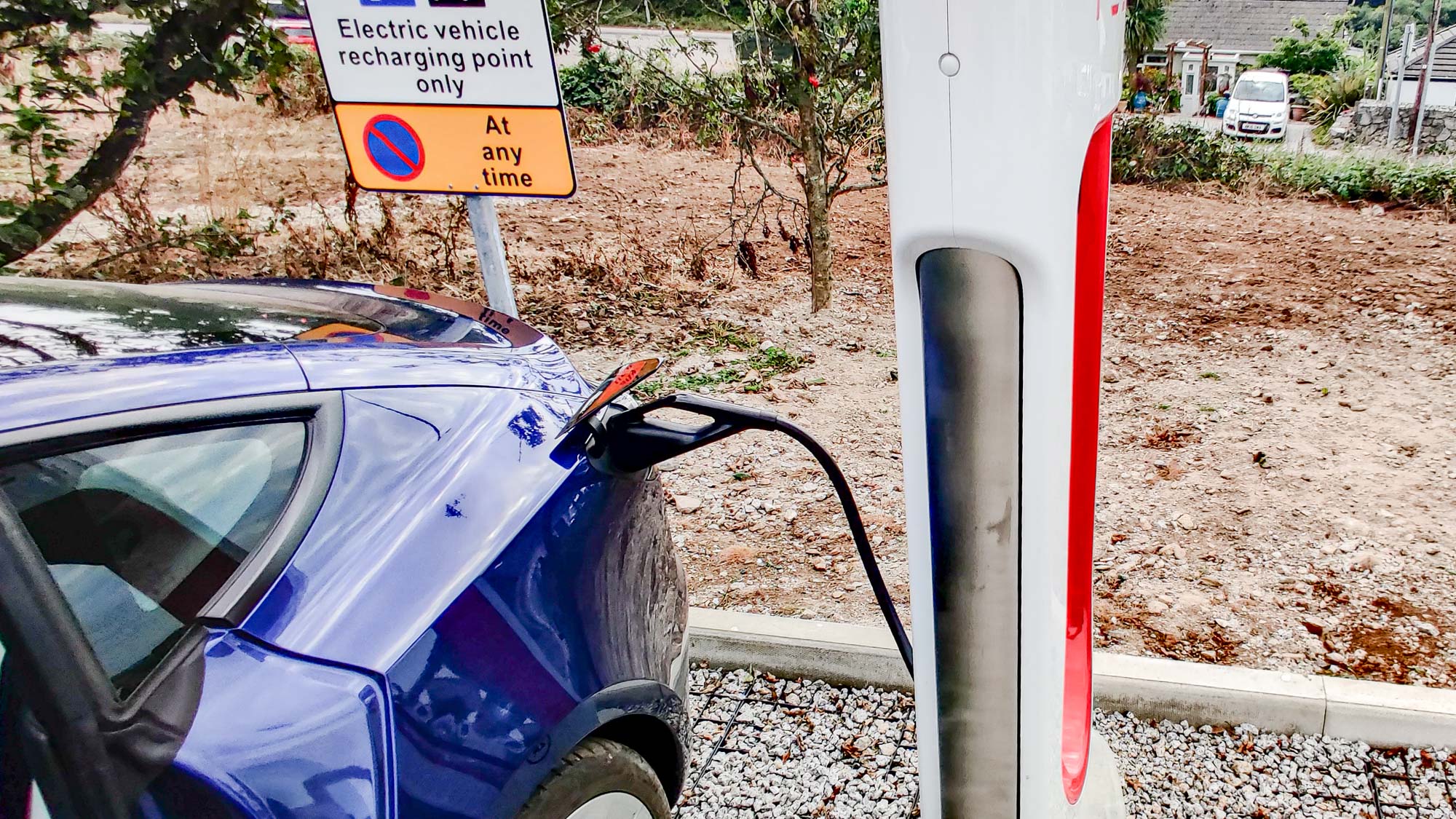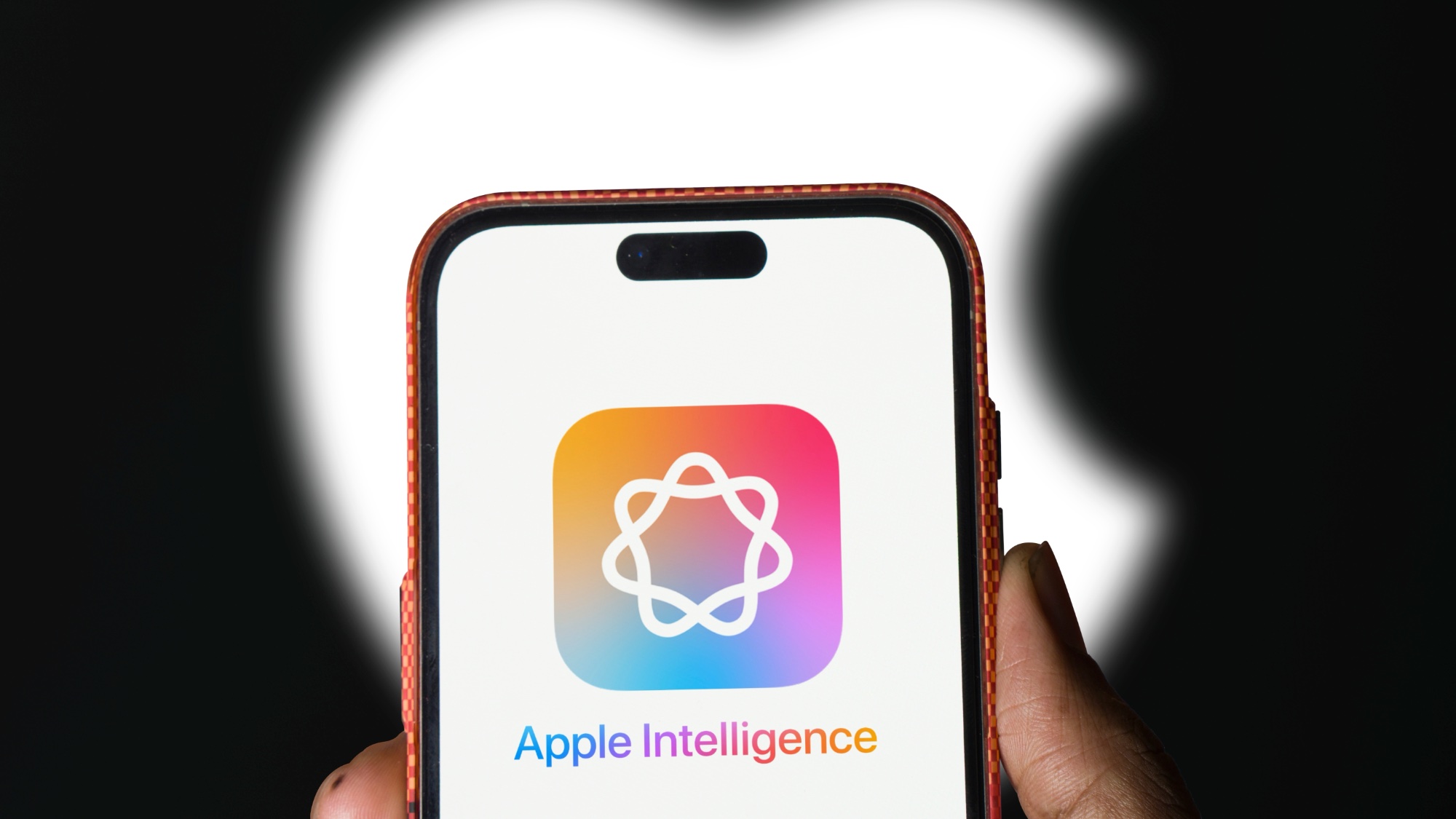What is a Tesla Supercharger? Everything you need to know
Here's what you need to know about Tesla's rapid charging network

There are a lot of benefits to owning a Tesla, be it Autopilot, in-car technology, or the absurdly long range. But there’s also the Tesla Supercharger network, a series of rapid charging stations across the world.
It’s likely that you’ve heard of Superchargers, but might not have a complete picture of what they are or what they do. If you have questions, we have answers, including what Supercharges are, how much they cost, and how you can find one.
What is a Tesla Supercharger?

A Tesla Supercharger is a kind of electric car charger, specifically designed for what’s known as "rapid charging." In simple terms that means they offer incredibly fast charging speeds, of a kind that should be able to recharge an electric car battery in under an hour.
However Superchargers are exclusive to Tesla, and will only work with the Tesla Model S Model X, Model 3, Model Y and other upcoming Tesla cars like the $25k hatchback and Cybertruck. Other cars, including the original 2008 Tesla Roadster, won’t be able to use one.
The Supercharger network is the collective name for all the Superchargers across the world. They’re all owned and operated by Tesla itself too, whereas other charging networks are operated by third parties. The network is pretty vast, with more than 2,500 locations (or hubs) across the world — 1,000 of which are in North America alone.
Each location is made up of multiple charging points, meaning multiple cars can be plugged in at the same time. Currently there are more than 23,000 individual Tesla Supercharging points around the planet.
Types of Tesla Superchargers
There are three different kinds of Supercharging stations out in the world: V1, V2 and V3 Superchargers.
V3 Superchargers are the latest and most advanced Superchargers, which offer up to 250 kW charging speeds. The V2 and V1 Superchargers, meanwhile, are limited to slower 150 kW speeds instead.
The current rumor is that V3 Superchargers may get an upgrade, potentially offering up to 324kW speeds in the near future. V4 Superchargers are also on the horizon, with some unspecified upgrades, and the first is set to be built in Arizona with solar panels and a Megapack storage battery.
But, beyond the maximum charging speed available, there’s no major difference between the different kinds of superchargers. However, because V1 and V2 stations are still in operation just be aware that you won’t always get the 250 kW maximum speed. Thankfully Tesla’s own Supercharger map does make it clear what speeds are available.
How to find a Tesla Supercharger

Finding a Supercharger is remarkably easy to accomplish. Not only does Tesla keep a map of every single Supercharger location on its website, you can use both the Tesla app and the in-car navigation system to track down your nearest Supercharger locations.
In fact, if you find yourself out on an extended road trip, Tesla’s navigation system will automatically take charging into account. That means the car will send you to a Supercharger along the way to your destination, to ensure that you have enough power to comfortably get there.
Tesla also keeps tabs on what amenities are available by each Supercharger (like restrooms and Wi-Fi), how many charging bays there are, and what the opening hours are. The app and in-car systems can also see whether Supercharger bays are available or not, so you don’t arrive to find them all in use.
How does a Tesla Supercharger work?

Tesla’s Superchargers are very simple to use. All you do is park up next to a machine, plug in, and wait for the cable to lock in place. The Supercharger will then begin delivering power, and the logo next to your charging port will turn green.
Because each car is already linked to an account with the Tesla app, there’s absolutely nothing else that needs to be done. Other public charging networks often rely on drivers confirming their charge in a separate smartphone app.
You’ll be able to see the progress of your recharge session on the car’s central display. It shows you how fast you’re recharging, how many miles of range have been added, how many miles you have in the battery, and how much this charging session has cost so far. This information is also visible in the Tesla app, should you have to leave your car unattended.
It’s also worth mentioning that your actual charging speed will fluctuate throughout the recharging session. The main factor is whether any other cars are plugged in at the same location, since they all end up sharing the power. In other words you won’t be getting 250 kW speeds if there are three or four other cars plugged in.
The other factor is one that affects all electric cars, and that is that charging slows down as the battery level rises. This is most noticeable after you hit 80%, at which point charging slows down to such a point that it might barely qualify as rapid charging. You’re better off unplugging and driving off than you are waiting to try and reach 100%.
One key point to remember is that lithium batteries don’t like being made to recharge faster, and regular rapid charging isn’t good for it. So try and limit your Supercharger use to long car journeys and road trips, and use slower AC charging for your regular day-to-day driving.
How much does a Tesla Supercharger cost?

Supercharging fees you accrue will be automatically billed to you, since each individual car is linked to a specific Tesla account. That means you don’t really need to worry about having any cash or credit cards with you.
But, by Tesla’s own admission, the cost of using a Supercharger can vary from place to place, and may even fluctuate depending on what time of day you charge. Prices are either charged by the minute, or by the number of units (measured in kilowatt hours or kWh) you actually draw from the grid.
Some locations will also charge idle fees to any cars that remain plugged in after their charging session is over. But again, this will vary from location to location.
If you're using a Supercharger that charges by the minute, rather than by how much power you use, you are charged based on a tier system. There are four tiers in total, each one more expansive than the last, which changes based on how fast your car is charging.
Tier 1 is the cheapest and applies to speeds under 60KW, while Tier 2 is 60kW to 100kW. Tier 3 applies to 100kW-180kW speeds, while the more expensive Tier 4 is everything above 180kW.
In the past Tesla has offered free Supercharging to certain customers, including those who bought cars before a certain date or who earned them through the company’s referral program. At the time of writing it seems these perks have been discontinued, and means anyone buying a Tesla right now will have to pay for all their Supercharging.
Can non-Tesla cars use a Supercharger?

The short answer is no. Tesla Superchargers are built, maintained, and owned by Tesla itself, and right now only Tesla-made cars are able to use them. However, Tesla CEO Elon Musk has confirmed that this will not be the case for long, and non-Tesla cars will be able to plug into Superchargers in the near future.
This came about thanks to Tesla’s dealings in Norway, where the company was told it had to end Supercharger exclusivity if it wanted to be eligible for certain government incentives. Musk later confirmed that the Supercharger network would be opened to other EVs starting sometime later in 2021.
This later proved to be true, with a pilot scheme opening up in the Netherlands in November 2022. Non-Tesla drivers can use the Tesla app to locate their nearest compatible charger, and have to confirm their charge before any power will be provided. In other words it's the same as any other third party charging network.
It does cost more for Non-Teslas, however, though pricing varies from location to location.
Elon Musk previously promised that Non-Tesla charging will come “over time, to all countries.” But no specifics on the rollout have been revealed just yet. However Tesla is using this pilot scheme to study the impact of this move on existing Tesla drivers.
While the pilot scheme is only available to cars with the standard CCS plug, the same one Tesla uses on its cars in Europe, Musk has claimed adapters would be available where needed —solve the problem of Tesla continuing to use its own proprietary charging port in the United States.
What is a Tesla Megacharger?

You may have heard about a different kind of Tesla charger, the so-called 'Megacharger'. In short, these are more powerful versions of the Supercharger designed to be used with the Tesla Semi — an all-electric truck.
However since the Semis isn't available yet, it means existing Megachargers are off limits to the public. Not that you'd be able to use it anyway.
We don't know a lot about the Megacharger, other than the fact Tesla was aiming for it to be able to offer 400 miles of range after 30 minutes of charging. There's also speculation that a single Megacharger will be able to offer over 1MW charging speeds — which is four times faster than the current 250kW maximum found at Supercharger stations.
All of which sounds incredibly impressive, but not at all surprising considering Megachargers are being built to power heavy semi trucks rather than regular road cars.
- Electric car charging stations near me: Where to charge your electric car
- Here are the best electric cars you can buy right now
Sign up to get the BEST of Tom's Guide direct to your inbox.
Get instant access to breaking news, the hottest reviews, great deals and helpful tips.

Tom is the Tom's Guide's UK Phones Editor, tackling the latest smartphone news and vocally expressing his opinions about upcoming features or changes. It's long way from his days as editor of Gizmodo UK, when pretty much everything was on the table. He’s usually found trying to squeeze another giant Lego set onto the shelf, draining very large cups of coffee, or complaining about how terrible his Smart TV is.
